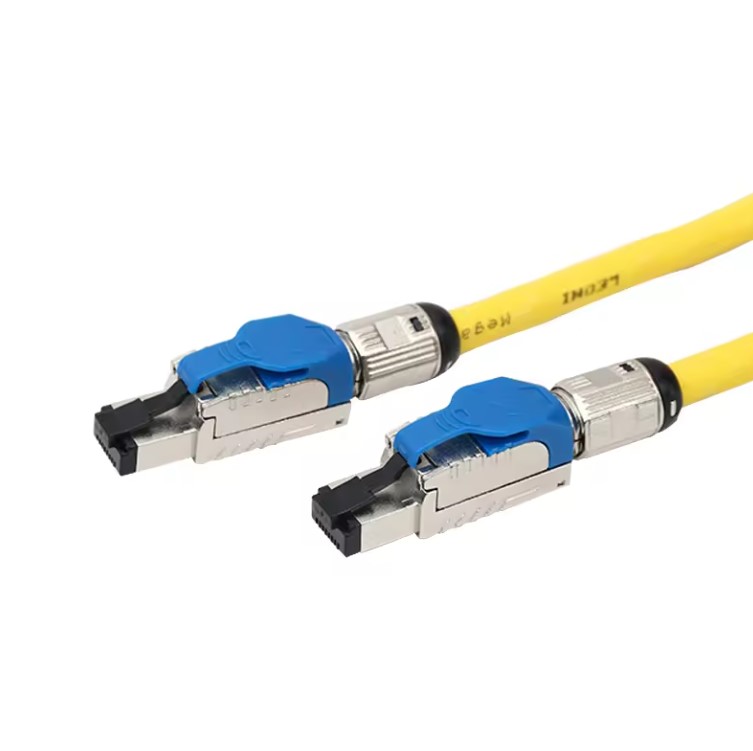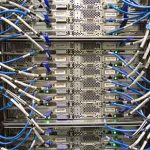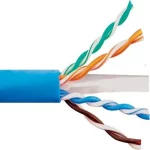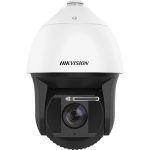Ethernet cables, with their familiar RJ45 connectors, form the backbone of wired networks across homes, businesses, and sprawling data centers. They transmit the data that powers our connected lives. Within the world of Ethernet cables, Category 6 (Cat6) and Category 7 (Cat7) cables occupy a crucial space, offering distinct capabilities to support network demands.
Cat6 has long served as the reliable standard for Gigabit Ethernet (1Gbps) networks. It’s affordable, flexible, and widely compatible with a vast range of network devices. However, with increasing bandwidth requirements and ever-present concerns about signal interference, Cat7 emerged as a more advanced option. Its enhanced shielding and higher frequency support cater to high-performance 10 Gigabit Ethernet (10GbE) networks, especially in challenging environments.
This article dissects the key differences between Cat6 and Cat7 cables. We’ll delve into technical specifications, compare use cases, and address frequently asked questions. By the end, you’ll be equipped to make informed decisions about which cable type best suits your networking needs.
Cat6: The Standard Workhorse
Category 6 (Cat6) Ethernet cables were introduced in the early 2000s, establishing themselves as a significant upgrade over their Cat5e predecessors. They offered improved performance, paving the way for widespread adoption of Gigabit Ethernet (1Gbps) networks in homes, small businesses, and even in data centers for shorter links.
- Technical Specifications:
- Frequency: Operates up to 250 MHz
- Bandwidth: Supports 1 Gigabit Ethernet (1Gbps) up to 100 meters; Supports 10 Gigabit Ethernet (10GbE) with reduced distances (up to 55m)
- Maximum distance: 100 meters for standard Ethernet applications
- Shielding: Options for unshielded twisted pair (UTP) and shielded variations (FTP, STP) for varying levels of interference resistance.
- Cost and Use Cases: Cat6 is widely available and cost-effective. It’s the go-to choice for:
- Home networks – streaming, gaming, general internet use
- Small to medium-sized businesses – file sharing, basic network applications
- Data centers (shorter distances) – links between switches and servers
- Limitations: Despite its versatility, Cat6 has its limits:
- Interference susceptibility: Performance can degrade at full 100-meter lengths, especially in high-noise environments. UTP Cat6 is most vulnerable.
- 10GbE distance limitations: Achieving reliable 10 Gigabit speeds often requires shortening Cat6 cable runs significantly.
To sum up, Cat6 delivers ample speed and reliability for the majority of everyday networking needs. However, with the growth of bandwidth-hungry applications and increasingly complex network environments, sometimes a more robust solution is required. That’s where Cat7 enters the picture.
Cat7: The Shielded Upgrade
Category 7 (Cat7) Ethernet cables represent a step up from Cat6, designed for high-performance networks where both speed and resilience against interference are critical. Their key differentiator lies in their enhanced shielding, directly impacting their capability and cost.
- Technical Specifications:
- Frequency: Operates up to 600 MHz (sometimes even higher)
- Bandwidth: Supports 10 Gigabit Ethernet (10GbE) at the full 100-meter Ethernet distance
- Maximum distance: 100 meters for standard Ethernet applications
- Shielding: Mandatory double shielding – each twisted pair is individually foil-shielded (S/FTP), and the entire cable has a braided screen shield.
- Use Cases: Cat7 excels in scenarios such as:
- Networks operating in electrically noisy environments (e.g., factory floors, near heavy machinery)
- Organizations requiring a future-proofed cabling infrastructure to support 10GbE or even faster speeds down the line.
- Environments with strict requirements for signal integrity and minimal data errors.
- Cost vs. Performance: Cat7 cables come with a higher price tag than Cat6 due to their upgraded materials and construction.
- Beyond Shielding: Other Considerations
- Installation: Cat7’s thicker construction and shielding necessitate specialized connectors, often GG45 connectors, to ensure proper grounding and maintain signal integrity. The cable is also less flexible, making installation slightly more challenging.
- Compatibility: While Cat7 uses the same RJ45 connector, special considerations might be needed for network equipment if not explicitly designed to support the higher frequencies used by Cat7.
Cat7 offers a significant leap in performance and interference immunity compared to Cat6. However, this comes at the cost of increased price and slightly more complex installation.
Table 1: Technical Specifications
| Specification | Cat6 | Cat7 |
|---|---|---|
| Frequency | Up to 250 MHz | Up to 600 MHz (or higher) |
| Bandwidth (100m) | 1 Gigabit Ethernet (1Gbps) | 10 Gigabit Ethernet (10GbE) |
| Bandwidth (55m) | 10 Gigabit Ethernet (10GbE) | 10 Gigabit Ethernet (10GbE) |
| Max. Distance (Standard Ethernet) | 100 meters | 100 meters |
| Shielding | UTP*, STP*, FTP* | S/FTP** (Mandatory) |
Notes:
- UTP: Unshielded Twisted Pair
- STP: Shielded Twisted Pair (overall cable shielding)
- FTP: Foiled Twisted Pair (individual pair shielding)
- S/FTP: Screened/Foiled Twisted Pair (individual pair shielding + overall cable shielding)
Table 2: Cost Comparison
| Item | Approximate Cost (USD) | Notes |
|---|---|---|
| Cat6 Bulk Cable (per foot) | $0.15 – $0.30 | Price varies based on shielding type and brand |
| Cat7 Bulk Cable (per foot) | $0.30 – $0.80 | Significantly higher cost due to shielding |
| Cat6 RJ45 Connectors (each) | $0.20 – $1.00 | Standard connectors |
| Cat7 GG45 Connectors (each) | $1.00 – $3.00 | Specialized connectors needed for grounding |
| Cat6 Patch Panel (24-port) | $30 – $80 | |
| Cat7 Patch Panel (24-port) | $60 – $150 | Higher cost due to shielding requirements |
Note: Costs are estimates and fluctuate with market conditions and supplier pricing.
Table 3: Use Case Suitability
| Scenario | Cat6 | Cat7 |
|---|---|---|
| Home Networking | Excellent | Often Overkill |
| Small Office | Very Suitable | Excellent if future 10GbE adoption likely |
| Large Enterprise (Standard Wiring) | Suitable | May be preferred in high-interference zones |
| Data Center (Server-Switch Links) | Common | Ideal for 10GbE links and noisy environments |
| Industrial Settings | Adequate if distances are short | Superior for high-noise areas |
Important Considerations:
- The choice between Cat6 and Cat7 is less about absolute superiority and more about aligning cable capabilities with specific needs and budgets.
- Future-proofing your network infrastructure is a major factor when justifying the investment in Cat7 cabling.
Key Takeaways: Cat6 vs. Cat7
- Cat6: The Cost-Effective Standard
- Delivers excellent performance for the majority of home and small business networks.
- Supports Gigabit Ethernet (1Gbps) at full 100-meter distances.
- Readily available, with lower costs for cables, connectors, and accessories.
- Easier to install due to more flexible cables and standard connectors
- Cat7: The Shielded Performance Upgrade
- Ideal for high-interference environments (factories, heavy machinery).
- Guaranteed to support 10 Gigabit Ethernet (10GbE) at the full 100-meter distance.
- Offers a future-proof solution as network speed demands increase.
- Increased costs for cables, specialized connectors, and compatible equipment.
- Installation requires more care due to less flexible cables and grounding needs.
The “Best” Cable is the One That Suits You:
- Prioritize Budget: If cost is the primary concern and Gigabit speeds suffice for the foreseeable future, Cat6 is a sensible and reliable choice.
- Demand Maximum Performance: If you require guaranteed 10GbE speeds or operate in a noisy electrical environment, Cat7’s investment is justifiable.
- Factor in Future-Proofing: Consider Cat7 if your network is likely to evolve towards faster speeds, even if they aren’t immediately needed.
Remember, choosing the right Ethernet cable is an investment in your network’s stability and capability. Weigh the pros and cons carefully to ensure your solution aligns with both your present needs and long-term goals.





